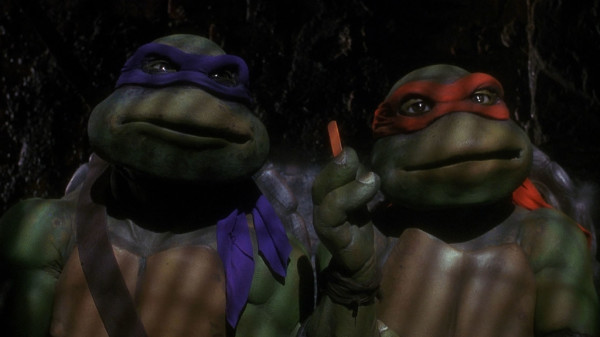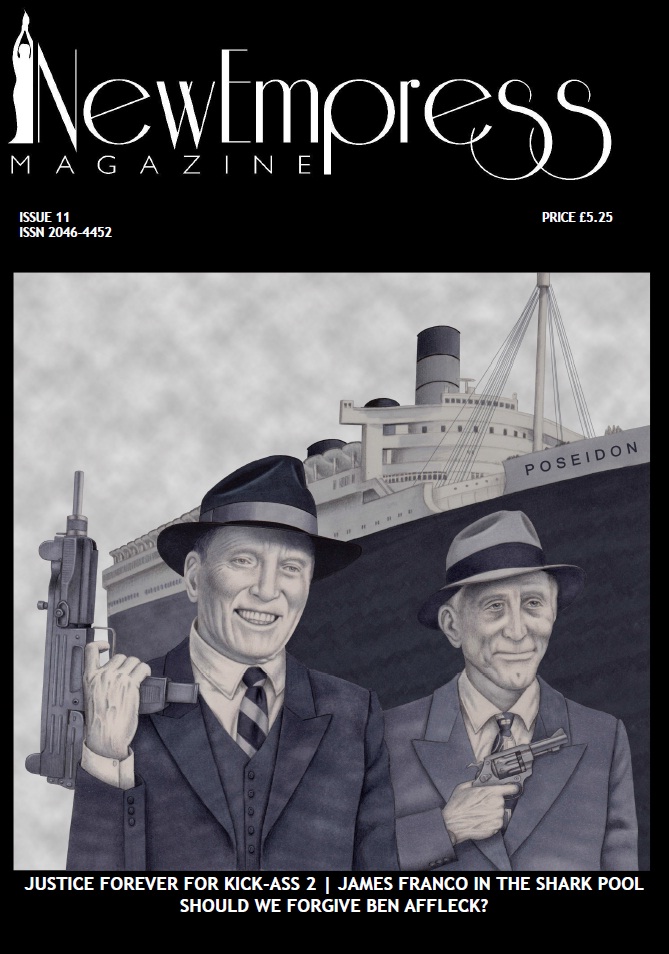
The highest grossing independent film of its time, Teenage Mutant Ninja Turtles now high-kicks onto Blu-ray as the headliner of a trilogy box set. A true relic of early 1990s cinema, Steve Barron’s franchise starter is a tonal imbroglio, with the Turtle’s bald innuendo and surfer slang an incongruous match for cinematographer John Fenner’s noirish lighting and the quasi-romantic subplot (thankfully avoiding Howard The Duck territory) belonging to a much cheesier film than this gritty and surprisingly violent comic book adaptation (the UK distributor was Golden Harvest, the Hong Kong company behind dozens of Jackie Chan and Sammo Hung movies).
The refreshingly linear plot (no origin story here!) finds our ‘Heroes in a Half Shell’ racing to the rescue of their sensei Splinter (Kevin Clash; beloved puppeteer behind Elmo), captured by the nefarious Shredder and his ragtag Foot Clan. If TMNT’s narrative scrappiness ages it badly, Sally Menke’s lean and pacey editing is welcome in a period of over-stuffed, two-hours-plus blockbusters and the self-aware screenplay allows for some uniquely fun moments, such as Raphael’s kung-fu riff on Footloose atop a New York antique shop.
The Shredder (half-samurai/half-Bane and played brilliantly by David McCharen) returns as the quartet’s nemesis in Teenage Mutant Ninja Turtles II: The Secret Of The Ooze (evil ooze was also an obstacle for the Power Rangers in their 1995 movie outing; TMNT fans will remember that the characters crossed over for an episode of The Next Mutation), and though the ante is thoroughly upped for several carefully choreographed brawls, the franchise too quickly resolves its tension between goofball humour and melancholic brooding by stripping out the latter entirely.
The Turtles’ jock jesting is appropriate (they’re teens, after all), but it’s over-indulged and, without any real or immediate sense of danger, or the rougher edges of Barron’s film, it becomes grating. There’s also the unavoidable spectre of better movies lingering here – 1984 gems Ghostbusters, The Karate Kid and Gremlins all get a look into the action at some point and only a showdown with two mutated villains in an old scrapyard feels genuinely fresh or exciting.
Teenage Mutant Ninja Turtles III (1993) transports the gang back to feudal era Japan (the Edo period where many Kurosawa films – from Throne Of Blood to Rashomon – take their setting), capitalising on Back To The Future III’s way-back-in-time premise, where a franchise-specific era is confounded by the anachronistic behaviour of our misplaced heroes. It’s naff-o-rama and while the Turtles have basically just become Bill & Ted in green makeup, the series still hasn’t grown out of its 1980s funk – just look at the opening credits, where the group prance around their subway hideout like they’re in the Breakfast Club.
Even worse, director Stuart Gillard indulges Hollywood’s typically lazy Oriental tourism, adopting the set and costume design of Edo Japan but caring little to recreate accurate details. It’s a sketchy, don’t-they-all-look-the-same canvas into which the Turtles can easily fit and do battle. Still, TMNT III has a goofy spirit and some good samurai action, so the kids probably won’t care too much about the casual racism and stupendously illogical plotting.
Extras
Bonus material is slim, with only a ‘Making-of’ documentary on the first disc posing any value. All transfers are fine, if basic, though the sound mixing on TMNT II and III is uneven, especially in early dialogue scenes.
Michael has awarded the Teenage Mutant Ninja Turtles Trilogy three Torches of Truth














